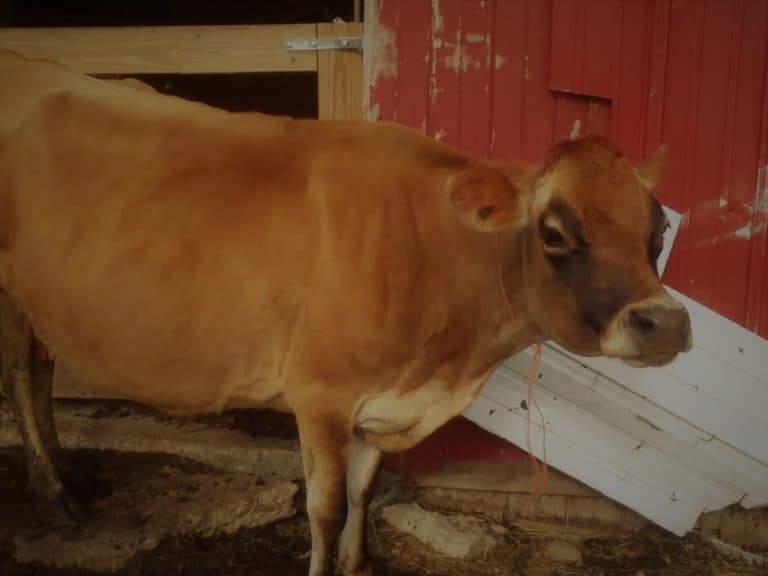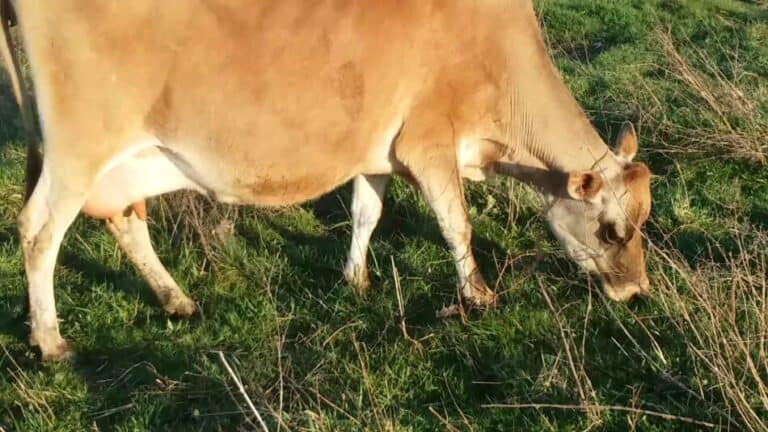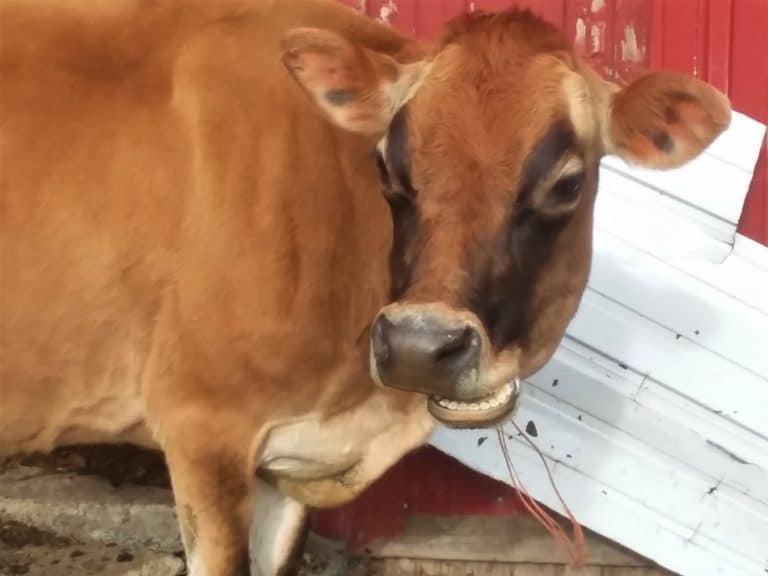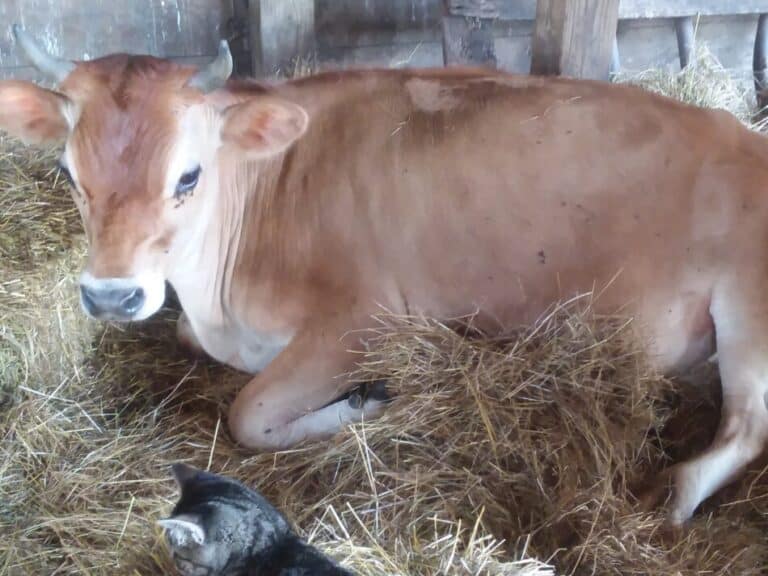Family Milk Cow Daily Care: The 5 Essentials For Success

The basics for a happy and healthy family milk cow are easy and simple, there are only 5 that you need to get right!
Don’t let the simple part fool you, each is important to keep your cow happy and productive. Ready to have the best tasting milk, ever?
The 5 essentials to milk cow daily care are:
- Routine
- High quality forage (grass or hay)
- Clean pail or milker
- Relaxing place to lay down
- Attentive caregiver
First off, congratulations on getting or considering getting a family cow!
You’ll love the seemingly endless supply of wonderful for you, the best you’ve ever tasted real milk! Nothing compares, seriously, nothing!
How do you know if you’re ready? My guide “Are You Ready For A Family Cow?” will walk you through the things you need to have figured out, including feeding needs and daily care, before you get your cow.
Family Cow Milk Production goes over how much milk you can expect from your family cow and what you can do to keep her milking her best.
Of course, there is the satisfaction of doing a great thing for yourself and your family, but it’s more than that.
It’s the amazing taste and the knowledge that you took back the control of one more piece of your life, nutrition!
Need help picking your cow? Read my article Best Breeds For A Family Cow and How To Choose A Family Cow.
Let’s get to it, here are the 5 essentials your cow will need from you to perform at her best.
Your cow’s daily routine is essential
The most important thing you can do for your cow is to set up a routine and stick to it. She loves routine!
Just like when you pick up the leash, your dog knows its time for a walk, when your cow sees the milk pail she knows its time for milking!
Don’t just think milking, when you think routine for your cow. Of course, milking is what comes to mind first, but that is only a small part of her day and a small part of her interactions with you.
Your cow will learn to anticipate what will happen next and it will actually help you! By setting up and sticking to a routine you will be giving her cues as to when you want her to let down her milk.
For instance, she will know that when you open the stall gate, she goes in, gets grain, gets tied, and you bring in the pail to milk. In her mind, the routine starts with opening the gate to her stall.
Notice that I wrote she goes in, not you chase her in. Why? Because she is happy to get the snack and will willingly zoom on in to eat it.
Your cow will look forward to milking, when you help her associate it with a positive result for her, in this case the snack of grain.
Maybe your cow stays inside overnight? Either way, it’s the same thing. She’s still happy to see you and have the milking routine start, since she knows it gets her a snack.
Does she need grain? No, but ….
It’s important to focus for a bit on the grain. Strictly speaking, it’s not needed, so why do it?
In this situation, it is the treat she knows she’ll get when she does what you want (goes in the stall).
The grain is being used as a highly anticipated training aid more than a significant part of her daily ration. Meaning the grain gets her to happily cooperate!
If you have read some of my other articles, you know we do not feed our cow, Aleene, any grain.
She doesn’t need it, since she milks more than we need on grass (or hay) alone and she can keep in good condition without the extra calories.
This is an individual thing, your cow may need the calorie boost.
Milking Aleene without the lure of grain
How do we milk Aleene if we don’t give her grain to catch her? We go to her and milk her where ever she is standing. Sometimes she needs tied, sometimes not.
I have a few strategically placed buckets I use to sit on that I grab on my way out to milk. I also have twine available to tie her, if she’s not feeling like standing still.
It’s not all roses, sometimes she can be quite evasive.
If she’s really feeling her oats, I’ll have to watch her “run away” from me a few times before she’ll decide milking will be okay, after all.
Normally, she is great, occasionally, she’s a character!
If the occasional evasive maneuvers on her part were happening too often for me to tolerate, I’d need to change my ways to encourage her cooperation.
So far, while it’s annoying when she’s hot footing it away from me, it’s infrequent enough that it’s not a big deal. (But, definitely annoying at the time!)
Cows need high quality forage all year
Your cow can only perform as well as the forage she eats allows her to perform. Grass is perfect and easy, she’ll get all she needs from the pasture and a salt block.
If she’s not on pasture, make sure she’s eating good hay, not just/junk hay. If she eats junk hay, she’s not going to do well.
I’m not saying she needs 100% alfalfa, that’s probably too much “candy” like hay and will throw off her digestion!
Meaning you’ll be dealing with her upset stomach and really runny poop! However, some alfalfa, maybe a flake every evening after she eats her normal hay, would be great.
Her normal hay should be a very high quality first cutting or a nice second cutting, ideally a grass mix. This is the hay that will make up the vast majority of her winter ration.
For the grazing season, she needs plenty of pasture. She should be able to eat all she needs in an hour or two, then spend the rest of the day chewing her cud.
If that’s not happening, she needs better pasture or supplement her pasture with a bit of that nice alfalfa.
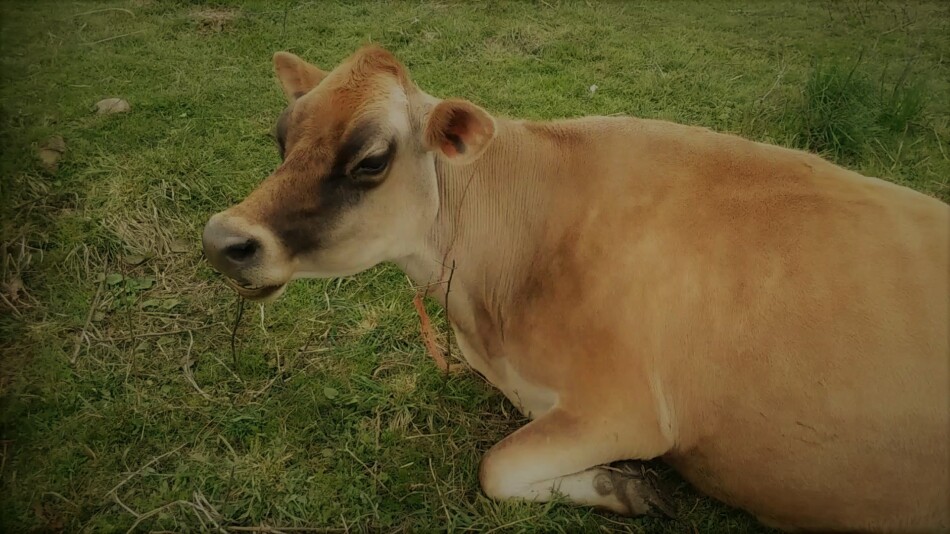
How much area qualifies as “plenty of pasture”is a tough call, since areas of the country are so different.
I would want 2 acres per cow at a minimum to start for our area (Ohio), you’ll need more if you are in a low production or low rainfall area.
How do you know if you’re ready? My guide “Are You Ready For A Family Cow?” will walk you through the things you need to have figured out, including feeding needs and daily care, before you get your cow.
How much will your cow need to eat per day? Check out my article Feeding A Family Cow.
Have a clean milk pail or milker
This one sounds so basic and obvious, yet it can still get overlooked. The part that is overlooked here is the bacterial build up in the dirty pail or milker will make the milk get off flavors faster.
You are basically inoculating today’s milk with whatever bacteria is growing in the pail, kind of like making a weird yogurt.
You need to actually scrub with warm/hot water and use soap or detergent to get the pail clean. Just rinsing is not enough, there will be build up.
Since milk is a mix of water soluble and fat soluble, you need the soap/detergent to get it clean.
No need to overthink this, we use dish detergent. If you have a machine, clean as recommended.
If you are using a machine milker, be sure to keep the air hoses clean, as well. Sometimes, build up of milk can happen in the hard to reach places of your milker.
Double check the claw, you’ll need to take it apart to clean it once in a while.
Additionally, if you have not replaced your inflations, look into it. They do not last forever! Since they are soft, they can be a place for build up to happen, as well.
Here is an article on commercial dairy farm milk house and parlor cleaning and problem solving. For you, it’s overkill, but available if you are interested in the industrial approach.
She needs a relaxing place to lay down
Having a clean and comfortable place to lay down and rest is vital to your cow’s health. That may sound like an overstatement, but it’s 100% true!
Your cow whole digestive system depends upon chewing her cud, that is the key to ruminants being such great grass/forage converters.
To chew her cud, she want a comfortable place to rest. So, to be a great cow, she needs a great place to rest!
On nice summer days, she can be happy outside on the pasture, no worries.
On the extreme days like the super hot days, in the down pours, in the cold winds, she needs to be able to rest out of the weather.
Ideally, your cow will have the choice to be inside or outside as she sees fit.
This way, she will take care of her needs for the day and you won’t have to worry when the weather changes, unexpectedly.
Your cow needs an attentive caregiver
An attentive caregiver/owner is another word for good animal husbandry.
The better your animal husbandry skills, the higher your chance of success with any animals, your cow included.
If you are a beginner and don’t know what you need to be looking for, don’t worry. Remember, we all have to start somewhere.
Don’t let being new stop you, just keep the focus on observing your cow.
Your cow will “tell” you how she is doing, each and every day.
The catch is she’ll show you and you have to learn to interpret what you are seeing. You’ll get it, this all comes with time spent around your cow.
What are you looking for?
Things like how does her hair coat look, is she quieter/calmer than normal, is she louder than normal, does she look and act happy, does she spend a large part of the day chewing her cud, what is the consistency of her manure?
Maybe she just needs a bit of adjustment in her ration or maybe you need to call the vet.
Either way, the more attentive you are the sooner you can get her back on track.
If you ever do need to call the vet, the more information you can give, the more the vet can help your cow.
How do you know if you’re ready? My guide “Are You Ready For A Family Cow?” will walk you through the things you need to have figured out, including feeding needs and daily care, before you get your cow.

